By Kevin M. Hymel
The Messerschmitt Bf-109 fighter plane dove out of the sky with machine guns firing. The pilot’s target—a pontoon bridge being stretched across Germany’s Werra River by American engineers. He closed in on his stationary prey and dropped a bomb, scoring a direct hit. The bridge erupted in a plume of metal, wood, and water. Then he circled for another pass.
As the plane leveled off for its second run, a lone soldier standing on the east bank raised his rifle and fired. Private Bernie Sevel, a scout for C Company, 359th Infantry Regiment, 90th Infantry Division—the Tough Ombres—shot round after round as the plane closed the range. The date was April 2, 1945, and Sevel and another scout had just paddled across the Werra, approximately 100 miles northeast of Frankfurt in the heart of Germany. They were there to secure the east side while engineers built the bridge to deliver tanks, artillery, and other equipment from the west side. With the bridge blown to smithereens, the two scouts were alone on the wrong side of the river.
Sevel’s shots got the pilot’s attention, shifting the German’s line of attack toward the two Americans. He opened fire. As 20mm rounds pounded the ground, Sevel and the other scout dove into a shell hole. The pilot zeroed in on his new target, but as his tracers reached the hole he was suddenly surprised by heavy fire coming from his left. Engineers, soldiers, and tankers on the west bank, angry at the loss of the bridge, fired wildly at the enemy plane. With his mission accomplished and not willing to risk wounds or death by attacking an unimportant target, the pilot sped away.
The two scouts were now stuck on the east bank. Sevel traded shots with a few German soldiers, but tanks firing from across the river kept them at bay. Even so, it would take days to bring up more bridging materials and rebuild the link. In the meantime, Sevel and his comrade would have to wait and see who would reach them first, Americans or the remnants of the once vaunted German Army.
Training For the Infantry
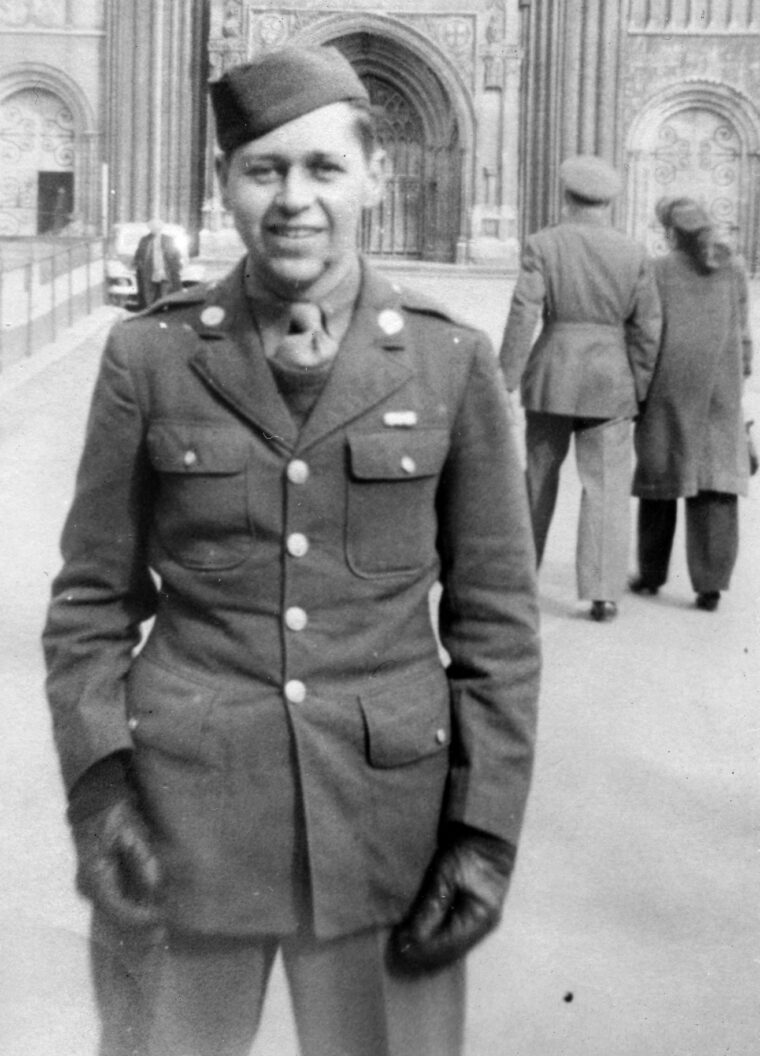
The east bank of the Werra River in central Germany was far from Sevel’s home. Four years earlier, he had stood in his parent’s Baltimore, Maryland, living room listening to a radio report about the Japanese attack on Pearl Harbor. He grew up in a Jewish household and could speak a combination of Yiddish and German. He graduated from high school in 1942 and studied engineering at Johns Hopkins University until the Army drafted him in February 1943. Sent initially to nearby Fort Meade, he soon transferred to Keesler Army Airfield in Biloxi, Mississippi, for Army Air Forces military police training. He continued his Army training at air bases in New Orleans, Louisiana, and Sauk Rapids, Minnesota, before transferring to Camp Miles Standish, Massachusetts, for the journey across the Atlantic.
In Boston he and thousands of other men boarded the British passenger liner Queen Elizabeth for the trip across the U-boat-infested waters. The ship crossed the Atlantic without escort, zigzagging the whole way, changing course every seven minutes. The uneventful trip ended when the ship docked at Greenock, Scotland, in early 1944, and the men transferred to Base Air Depot 2 at Warton, near Norwich, on England’s east coast.
Sevel took up MP duties, guarding the Eighth Air Force’s critical repair facilities. He found night guard duty had a perk: “I got to ride a motorcycle.” But he soon grew bored and felt the war passing him by. “I was young and stupid,” he admitted, so he decided to become a fighter pilot, a job that would send him back to the United States for training. He passed the physical and was preparing to depart when, on December 16, 1944, the Germans attacked through the Ardennes Forest of Belgium and Luxembourg—the Battle of the Bulge. All transfers were cancelled. No one was going back to the States.
Instead, Sevel spent a few weeks at Tidworth Camp in southern England retraining to become an infantryman. Upon reaching the continent, he and other replacements boarded trucks for a trip to the German border, traveling mostly at night. When his truck dropped him off in a wood, a sergeant greeted him with, “Here you are.” With that, Sevel became a member of C Company, 359th Infantry Regiment, 90th Infantry Division, VIII Corps in Lt. Gen. George S. Patton, Jr.’s Third Army. It was the end of February 1945. The Battle of the Bulge was over. The Siegfried Line had been penetrated, but the Army still needed infantrymen to crush the Third Reich.
A Scout in the Tough Ombres
The 90th Division soldiers wore a green and red patch on their shoulder embroidered with a T and O, representing Texas and Oklahoma, the two states that provided the men who made up the division in World War I. Their World War II successors, having come from states throughout the country, preferred to think the letters stood for “Tough Ombres.” Originally considered a hard-luck division under Lt. Gen. Omar Bradley’s First Army during the first three months of the Normandy campaign, the 90th soon became a well-honed killing machine after Patton’s Third Army became operational on August 1, 1944. The 90th raced across France, helped close the Falaise Pocket, assaulted the Moselle River, and took part in turning back the German tide in the Battle of the Bulge. As a novice infantryman with no combat experience, Sevel was in good company.
One of the platoon sergeants, a Texan named Roker, handed Sevel a bandolier of ammunition and asked him if he knew how to load an M1 rifle. Sevel told him he did. Roker then took Sevel’s web gear and, using a knife, cut off everything from his pack, leaving an empty pair of suspenders to hold Sevel’s ammunition belt. Finally, Roker took Sevel’s blanket. He would get it back each night. “It was a smart move,” recalled Sevel, who needed to move around on the battlefield unhindered. He did keep one personal item in his mess kit pouch, a small prayer book his mother had given him.
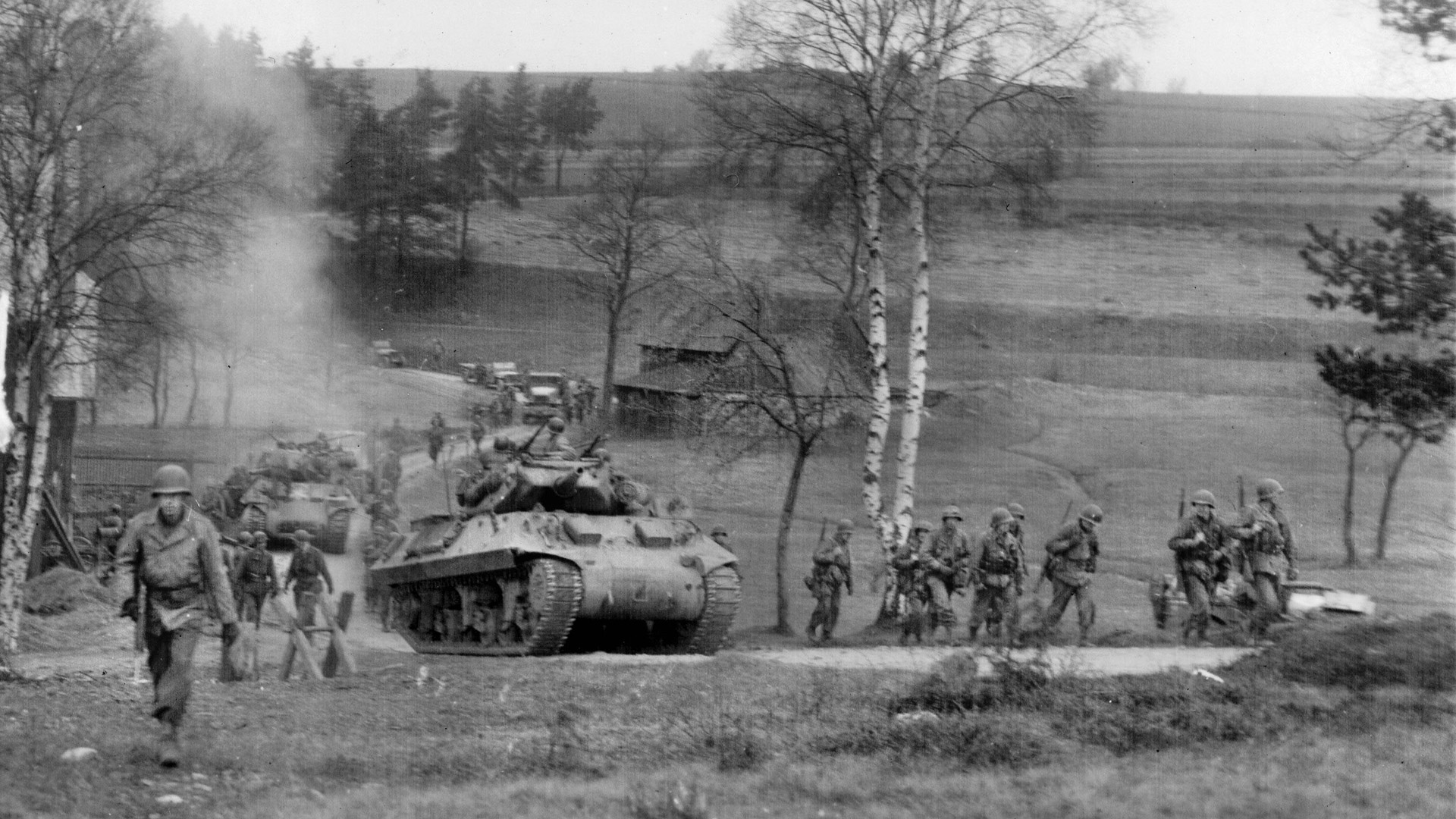
His work done, Roker stepped back and looked over his new recruit. “You look like you could move pretty well if you had to,” he told Sevel, who said that he had played sports in high school. “How would you like to be our scout?” Sevel knew the infantry scout’s job from an ROTC class he took before he was drafted. The scout advanced ahead of a platoon, probing alone for the enemy. By their stealthy advance, scouts prevented platoons from being ambushed. Roker made the job sound important, so Sevel agreed to do it. Later, he realized that Roker had given it to him because he was the most expendable person in the platoon. Roker did not want to risk the lives of his veterans.
It was a rough introduction to war. Sevel bedded down in a foxhole for the night. When he awoke his blanket had frozen in his body shape. To keep warm he wore a heavy winter overcoat (which he would lose at the first place he stopped), a field jacket, and sweater. He also wore regular Army boots without the rubber overshoes issued to many infantrymen. “You can’t move too well with galoshes,” he explained.
Fighting a Modern War
Sevel was one of two scouts in the platoon, but the other scout was constantly disappearing. Because of his reliability, the platoon’s veterans taught Sevel the finer points of scouting and being an infantryman. They taught him to use hand signals when advancing in front of the unit, though they boiled down to two: stay down or come on. One of the most important tips they passed on involved avoiding booby traps. The retreating Germans often planted bombs inside private homes behind paintings, which they deliberately hung off balance, counting on Americans to straighten them. Sevel vowed to never fix a painting hanging askew.
As Sevel started performing ahead of his platoon, he learned to keep a sharp eye out for the enemy and react quickly if the enemy detected him. “If the first shot don’t get me,” he explained, “I don’t want to be around for the second.”
Modern combat became Sevel’s world. Bombers filled the sky, American artillery screeched overhead, tanks rumbled past, and enemy small-arms fire zipped past him. He could soon differentiate the sounds made by American and German weapons. He quickly discerned the distinct sound of the German MG-42 machine gun, which fired 1,200 rounds a minute. “It fired at a much more rapid rate than an American machine gun,” he recalled. “It sounded like tearing something apart, more like a ripping fabric.” He held a great deal of faith in American artillery and never worried about short rounds. “There was enough enemy fire, [we didn’t] worry about friendly fire.”
Sevel’s platoon usually had one or two tanks assigned to it. Often, when the Germans pinned down Sevel and his comrades, the tanks rolled to the front and opened fire. If there was no enemy resistance, the men climbed on the tanks, which could hold five or six soldiers. “You’re hanging on,” he said about the ride, “and it was noisy, but it was a little better than walking.” When the tank came under fire, Sevel and the others would jump off and take cover.
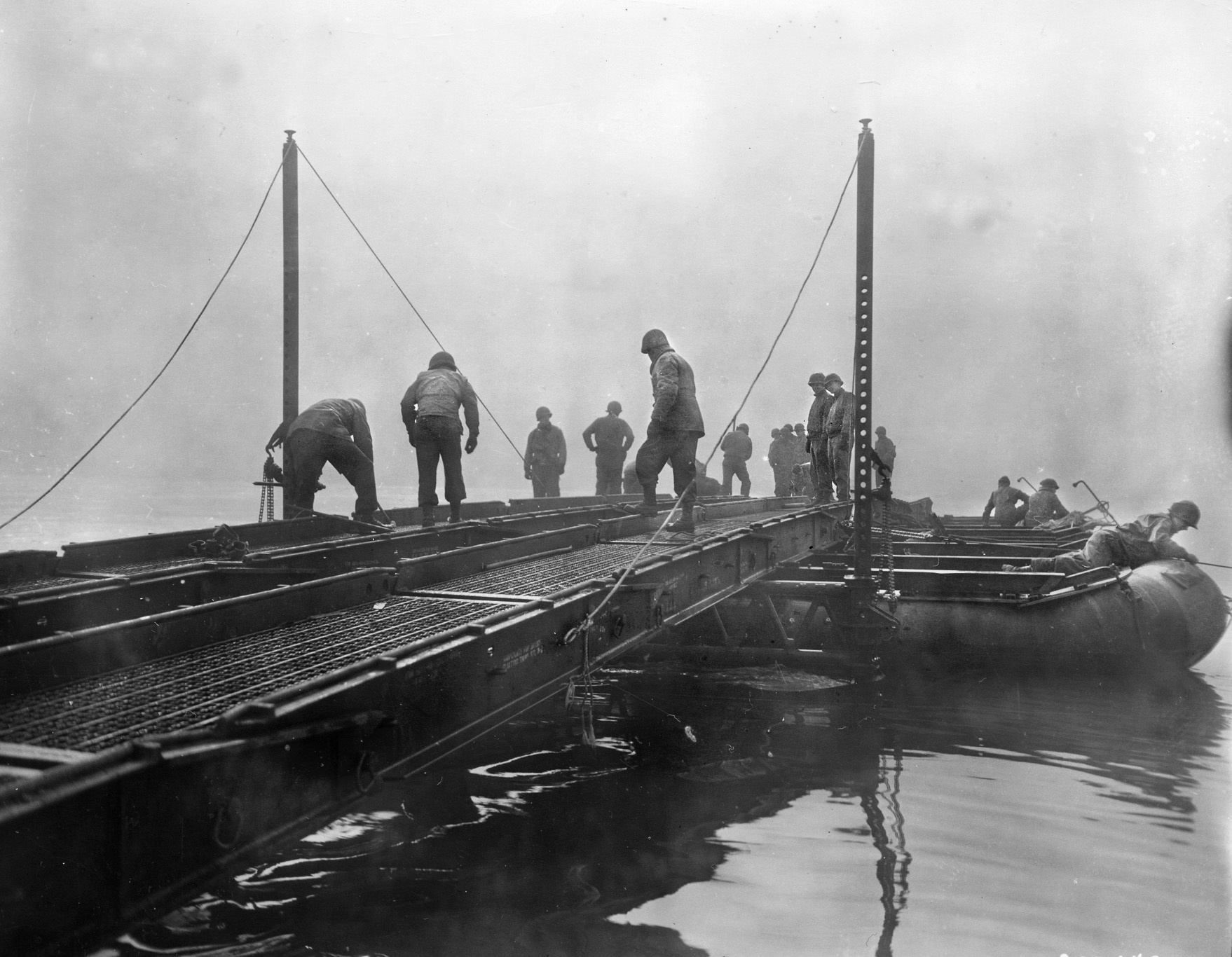
Life on the Front
Like most GIs, Sevel’s diet consisted of C-rations and K-rations. He preferred C-ration canned beans over anything else. “That was the best,” he recalled, “because you could eat them cold or hot.” K-rations, consisting of crackers, canned meat, a hard chocolate bar, other dry foods, and cigarettes, were on the other end of the spectrum. “They were terrible,” he said, “but they kept you alive.” A nonsmoker, Sevel gave away his cigarettes. If the men were lucky, at night a jeep filled with hot food and blankets would pull up. The men would take turns leaving the front lines to retrieve the precious supplies.
At night, when the fighting had stopped, the men dug foxholes. Nights could be rough, as the soldiers reflected on the close calls of the day. “I would think, ‘Am I going to be alive tomorrow?’” said Sevel. “When the shooting started you were too busy to be scared.” Whenever the men captured a town, they slept in houses or other structures. Despite his newness to the unit, Sevel pulled rank on his platoon. “I’m the guy out there in front,” he told them. “When we take a town I want the first choice of where to sleep.” To him, any floor beat a foxhole.
Over time, Sevel grew into a grizzled veteran. He shaved only when he felt too grungy. “Bathing was not a frequent thing,” he said. He lost his prayer book when it accidentally got soaked with shaving cream. He wore out his underwear so quickly that he eventually wore it around his waist like a skirt under his trousers. Very rarely did supplies of undergarments reach the front. “We were all pretty ripe and smelled the same.”
Since Sevel was out front, he often laid claim on any alcohol he found. He often came across houses with wine, but his favorite beverage became Armagnac brandy, produced in southwest France, which was hard to find. “There was never enough of it to get that plastered,” he said. One day, he found a bottle of what he thought was brandy in a German house. He took a chug, only to find himself gagging on salad oil.
“One of the Bravest Men I Ever Saw”
Even though the end of the war was in sight, it was still dangerous. Sevel recalled a Browning Automatic Rifle (BAR) man named Rosa, who everyone called Rosie, who got killed. “I didn’t see it,” he said. “Another one named Peterson got killed, and one lieutenant lasted about a week.” Despite the deaths, Sevel never saw anyone break down from the stress of combat. They could see the end was near.
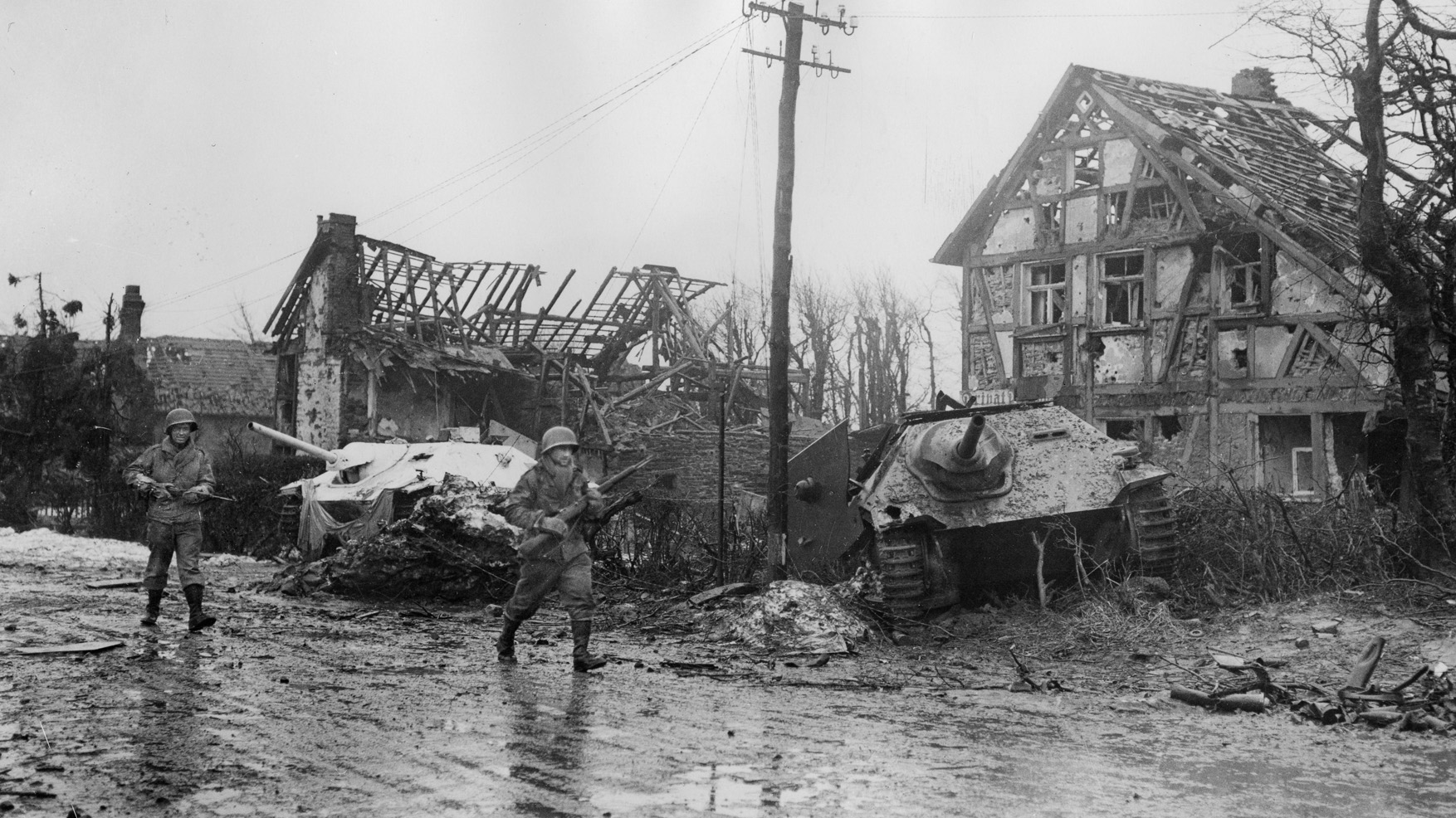
On one scouting patrol, Sevel and his friend Freddy Dembaum from Brooklyn, New York, were leading the way down a road more than 300 yards ahead of the platoon when they found a house they suspected might be an enemy ambush. Sevel kicked the door in and entered first to find only civilians. Using his ability to speak German, he asked them, “Wo sind die Deutschen? (Where are the Germans?)” When a woman asked him: “Bist du Deutscher? (Are you German?)” Sevel responded, “Juden. (Jew.)” Everyone dropped to their knees and begged Sevel not to kill them. When the two Americans asked if they had seen either mortars or artillery pieces, they said, “Nicht artillerie. (No artillery.)”
The two Americans continued their advance. Suddenly, they came under heavy fire. A German tank, possibly a Tiger, opened up with its 88mm cannon. “You could tell it was one of theirs,” recalled Sevel. “It had a boom-crack that was different from ours.” The two men dropped to the frozen ground and ducked into some shelter. As rounds zoomed over their heads, Denbaum turned to a scared Sevel and said, “Nicht artillerie!” The two eventually extricated themselves and made it back to the platoon.
Sevel’s company commander, Captain Donald Davis, impressed him. During fire fights, Davis often stood up to see what was going on. “He was one of the bravest men I ever saw,” said Sevel. One day soon after Sevel’s arrival in C Company, he came off the line to retrieve food when Davis spotted him. “Scout,” Davis called out, using Sevel’s nickname, “are you still alive?” Sevel assured him he was. He then asked, “Captain, how long do I have to be in combat before I get the Combat (Infantryman’s) Badge?” The badge was issued only to infantrymen who had fought for a sustained period. It was cherished as a badge of honor among veterans and, more practically, it also meant an extra $20 a month. Without a word, Davis took off his own badge and gave it to Sevel. He was now truly a veteran of the unit.
A few days after crossing the Rhine on March 24, Sevel’s company occupied a row of large townhouses along the Main River. Sevel had guard duty, watching out a window overlooking the river on a cold, moonlit night. Not realizing it bent nearby and that German soldiers occupied the other bank, he leaned out the window to look at the river. A string of tracer bullets zipped past his nose. He quickly pulled back. “When those bullets passed,” he recalled, “they make a certain noise you can’t forget.”
“Marching Fire”
Sevel’s next action came on April 2, when he and another scout paddled across the Werra River while engineers built the pontoon bridge. After the Messerschmitt pilot destroyed the bridge, Sevel and the other soldier occupied a house basement. All of the houses on the east bank were deserted. “They [the German residents] must have seen the battle starting and got out of there,” he figured.
The two scouts survived on canned fruit and black bread while waiting and hoping the Americans would complete the bridge before German soldiers reoccupied the village. One day Sevel heard noises upstairs from the basement. The voices sounded American, so he shouted out, “We are Americans down here! Don’t throw any grenades down here!” Then he spotted a pair of brown boots at the top of the stairs and knew he was safe. The bridge had been completed, and the Americans had beaten the Germans. He was relieved to be back with his buddies.
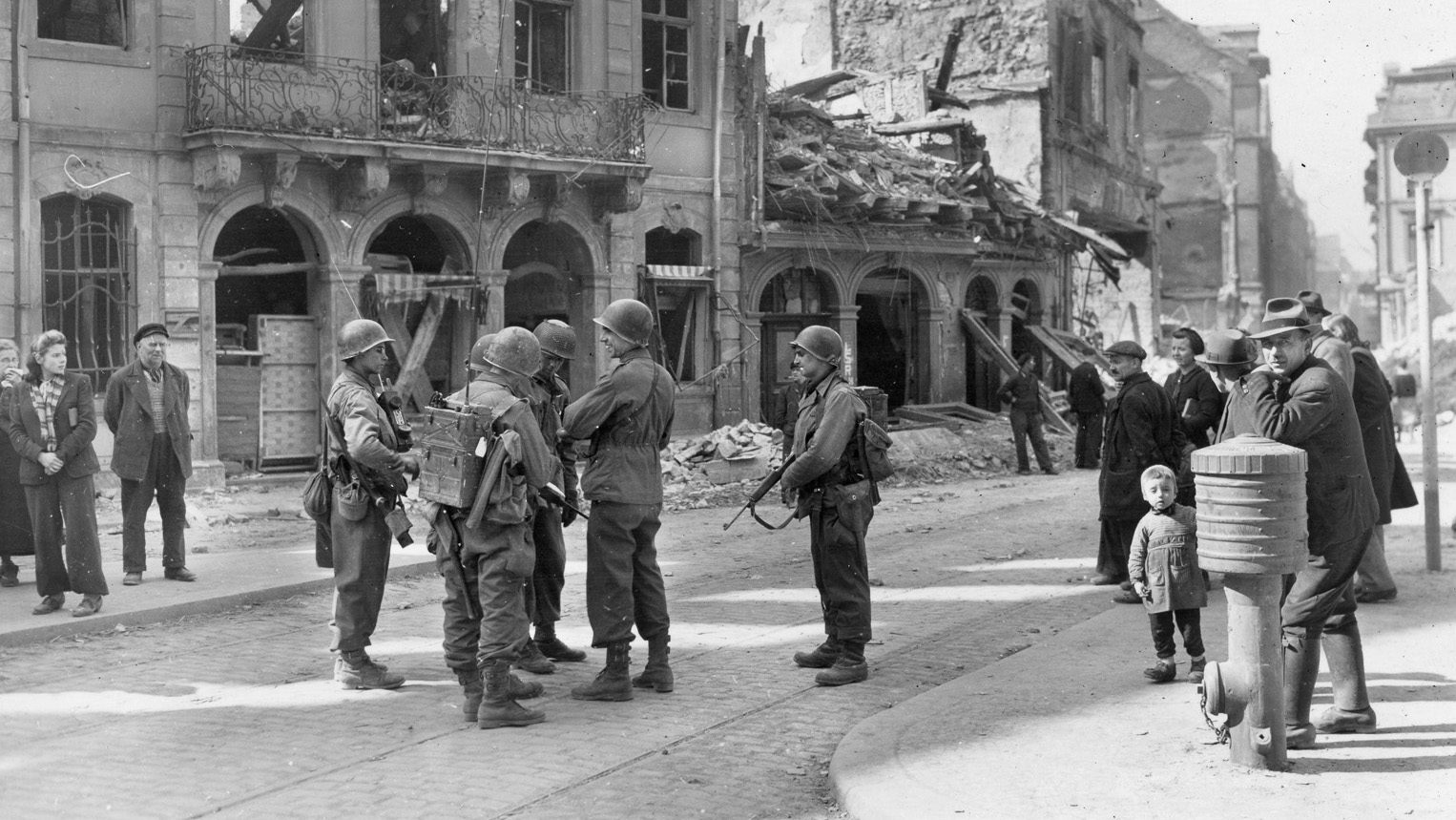
As Sevel and the Tough Ombres pushed deeper into Germany, he learned one of Patton’s favorite tactics, “walking fire” or “marching fire.” A platoon, and sometimes a company, would advance in a line, firing their weapons as they went. The constant fire forced the enemy to keep their heads down while the Americans closed the gap. Random shots would sometimes kill any enemy who stood up or peeked from cover. If a tank was in the line, it would add its machine-gun fire to the volume. The tactic was more effective with mortar support, 81mm mortars in a stationary position while 60mm mortar teams leapfrogged with the infantry. Patton liked that it gave troops confidence, writing about it after the war, “You feel that you are doing something and are not sitting like a duck in a bathtub being shot at.”
Sevel’s unit used the tactic several times. In one instance as the men prepared to advance on an enemy-held tree line, Sevel loaded his M1 Garand rifle with a clip of newly issued armor-piercing bullets. He thought he could use them to shoot through a tree and hit any German on the other side. The Americans charged, firing from the hip with their rifles. Sevel fired at a tree. The round hit, but his rifle immediately jammed. He was now defenseless and could see the enemy in the distance, putting down their own fire. He quickly pried out the stuck shell, popped out the clip, and reloaded with regular bullets. The Americans took the position with no enemy counterattack. That was the last time Sevel used armor-piercing bullets.
Crossing Into the Sudetenland
The 90th’s next target was the town of Furth-im-Wald on Germany’s border with Czechoslovakia. When Sevel and his comrades reached the town’s outskirts they commenced digging foxholes. As Sevel shoveled away, a sergeant called out, “Scout, what are you doing? You dig any more, and I’ll put you in for desertion!” He still laughs at the remark today.
Sevel’s regiment attacked, but the Germans pushed them back. They attacked again without success. On the third attack they finally took the town. Engineers then showed up and dug foxholes for the Tough Ombres. “The holes were useless,” recalled Sevel. They were too deep—even deeper than the foxhole Sevel dug for himself. “If you sat down, you couldn’t see over the top. If you stood up, you were too high, and they were not wide enough,” he said. To lie down in his hole, he had to tunnel out more room. The men kidded the engineers endlessly for poor foxholes.
On April 18, the 90th Infantry Division crossed into Czechoslovakia’s Sudetenland, a pro-Nazi region of the country. Sevel and his comrades found the civilians more hostile than the Germans. When the Czechs learned that President Franklin D. Roosevelt had died six day earlier, they asked, “Since Roosevelt died are you going to surrender?” The Americans, who had fought across Europe, were incredulous. “What are you talking about?” Sevel retorted.
German soldiers knew the war was coming to an end. Whenever they spotted American soldiers they immediately surrendered. By then the Germans understood that it was better to surrender to the humane Americans than the vengeful Russians. They would emerge from their hiding places holding their rifles above their heads and shouting “Kamerad!” Sevel would tell them to drop their weapons and curse at them in English. “I didn’t try to speak to them in their language.” He recalled seeing numerous piles of German rifles and small arms. He became a souvenir hunter, sending home a sword, a Walther PP pistol, a Czech vz. 38 pistol, and a Prussian uniform. Only the sword reached home.
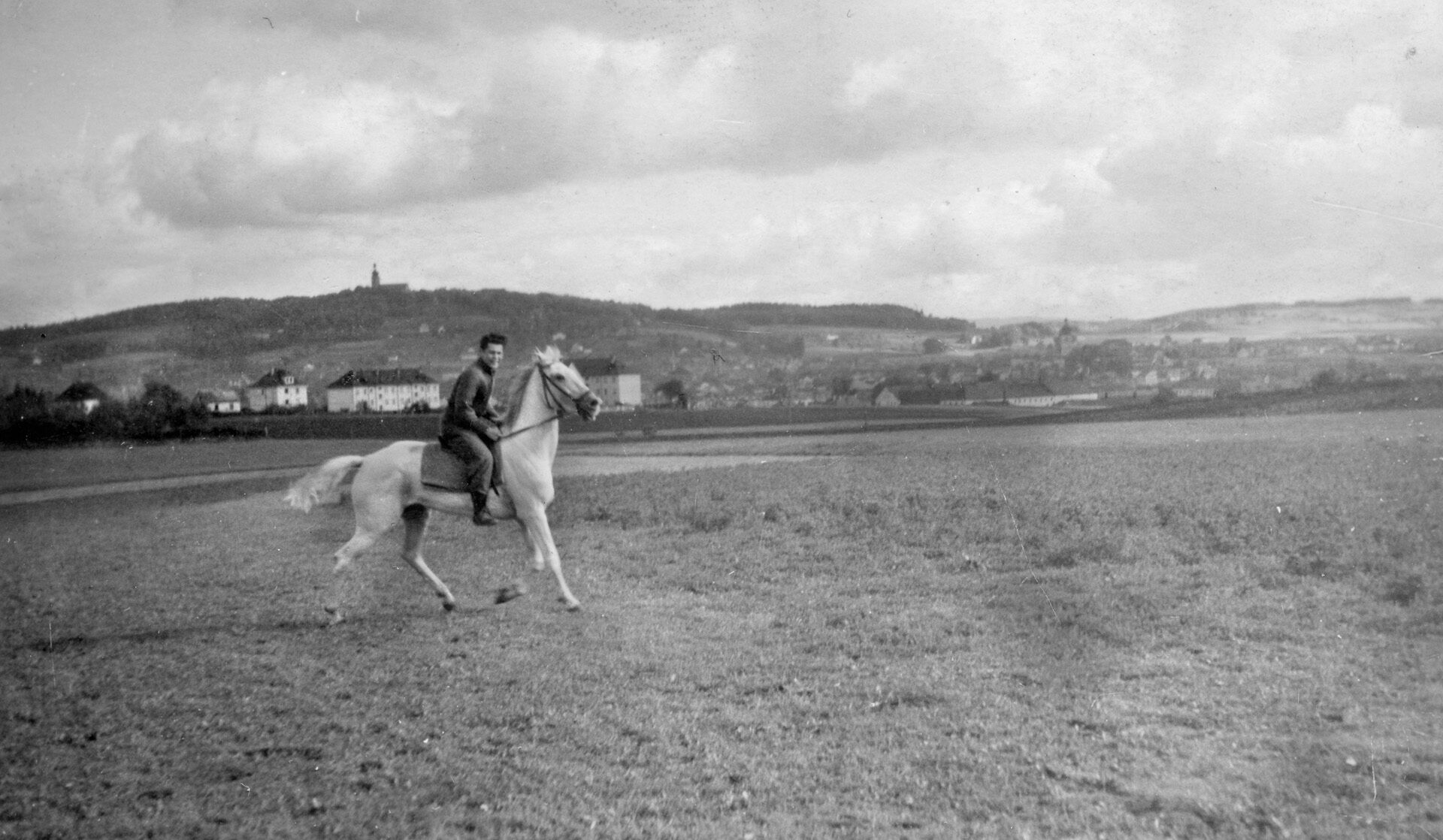
Almost all of the surrendering Germans were from the regular army, but in one town his platoon captured an SS soldier. The Americans hated the SS, who fought so fanatically, killed prisoners, and ran concentration camps. A sergeant with Sevel’s platoon offered to take the SS soldier for a walk to a POW camp, and the two headed off. Not long after, Sevel heard a shot. “He didn’t make it back to the POW camp,” he recalled.
Liberating Allied POWs
One day Sevel’s platoon bedded down in a farmhouse encircled by a stone wall with a gated entrance. The next morning the men headed out across the plowed fields with Sevel leading the way. A shot rang out, and Sevel ducked behind a large metal roller as bullets zinged past, tearing into the roller. Knowing the roller would not protect him, he ran and dove into a ditch filled with ice water. Freezing in the ditch, he realized he could either freeze to death or run for the farmhouse.
Sevel took off for the house. Rifle and machine-gun fire kicked up dust around his feet. “I could hear the ‘ping’ of shots hitting the ground,” he recalled. As he charged the stone wall’s entrance, he thought of all the war movies where soldiers were killed just as they reached the safety of a doorway. Fearing a random shot would catch him at the crucial moment, he dove through the open gate, bouncing and rolling until he came to a stop. Sergeant Roker looked at him and declared, “Scout, if there’s ever going to be an Olympic event of running across a plowed field, you’re going to get the gold.” Later, Sevel found a bullet hole in his jacket.
With only weeks left in the war, Sevel and his men came across a POW camp filled with British and Australian prisoners and opened the gate. The POWs looked gaunt but happy. Another American platoon disarmed the German guards, herded them together, and marched them through the town. An Australian POW asked one of Sevel’s friends, “Give me your gun,” and, once armed, took off running after one of the Germans. Sevel did not know what happened. U.S. Army MPs later arrived and took over the camp while another company brought food to their newly liberated Allies.
An Anticlimactic End to Sevel’s War
A few days later, Sevel was out ahead of his platoon when word reached him that the war was over. He turned around and joined his unit. “It was sort of anticlimactic,” he said, “after going from combat one day to the war being over the next.” Later, he and some of his comrades met up with Russian soldiers in some beer houses between the Allied lines. Sevel thought the Russians, in their heavy clothes and boots, looked young but rough. “They were youngsters,” he recalled, “They were all kids, about 15 or 16 years old.” Despite their age differences, the soldiers shared a camaraderie borne of combat.
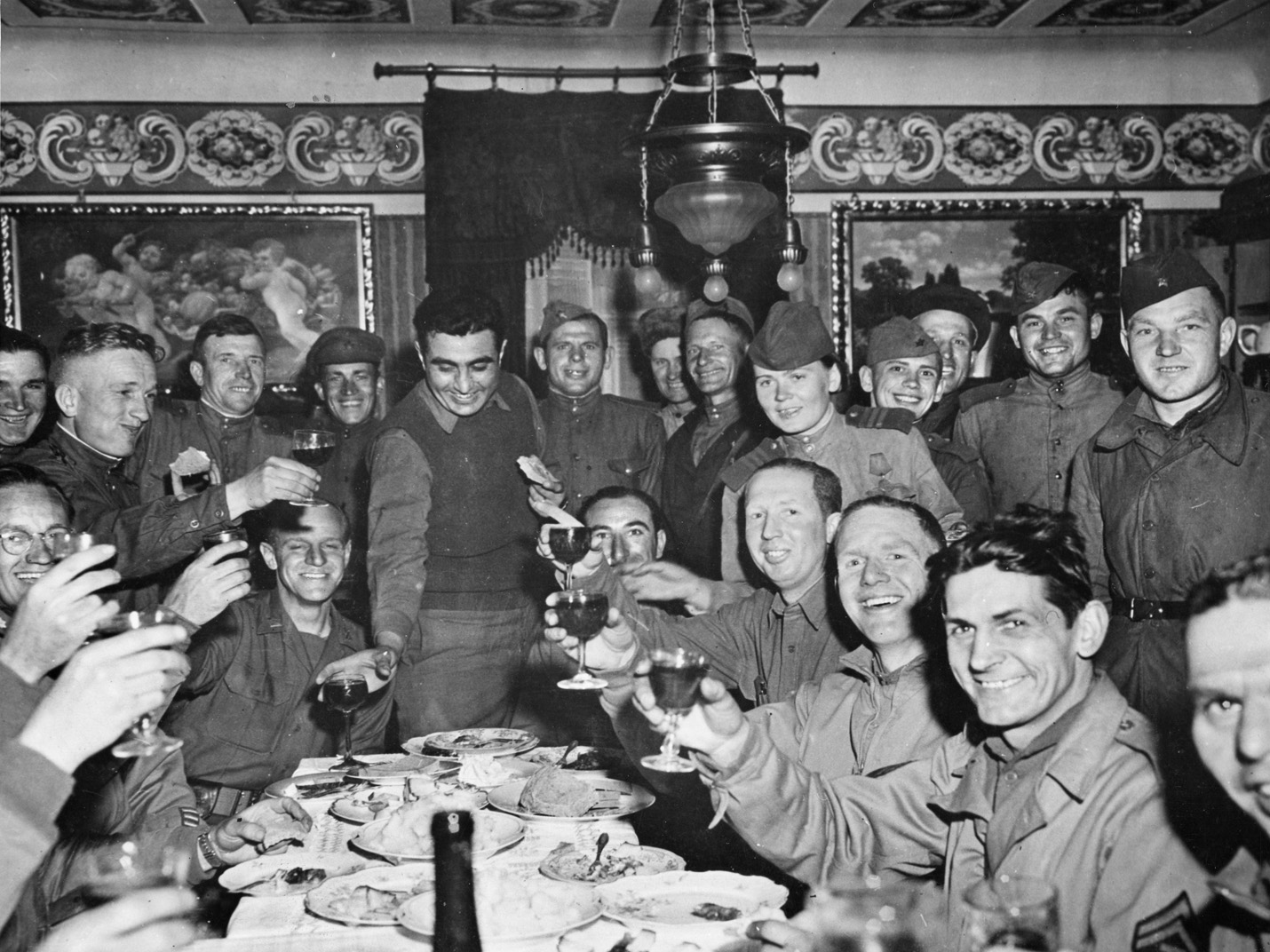
Despite the peace, the men still hated Czechoslovakia and its hostile citizens. The men begged to be transferred. When they were given a Rest and Relaxation (R&R) break, according to Sevel, they said, “Send us anywhere, just get us out of Czechoslovakia!” Sent back to Germany, he found that his ability to speak German was now more important than ever. It had served him well during the war, speaking to civilians and translating anything he came across, but now it took on a new importance and made him popular. “I could talk to the girls.” Sevel also became a horse whisperer. In an effort to keep soldiers busy, the division assigned him to look after some horse stables and take care of the horses. He enjoyed the work.
One day the men were standing around in a town when a jeep rolled up and General Patton stood up in the passenger seat. He was decked out in a high-gloss, four-starred helmet with an ivory-handled pistol on his waist. “Men,” the general shouted out in his raspy voice, “the 359th is the best regiment in the whole damn division!” With that, Patton’s jeep roared off. Sevel was sure Patton went to the 358th Infantry Regiment and said the same thing.
Sailing Home
Sevel had entered combat too late in the war to have the magical 85 points to go home. Soldiers earned points for time overseas, medals earned, and dependents. It took seven long months before he finally boarded the SS Fayetteville Victory in Marseilles, France, for the journey back across the Atlantic. And what a journey it was. The ship had few amenities. “It was not exactly the Queen Elizabeth,” he said. Rough seas made the trip perilous, and the freezing winter winds did not help. Many of the men succumbed to sea sickness. Sevel overheard a soldier say to a man heaving his guts over the railing, “Land is only two miles away.” The sick man looked up hopefully and asked, “Where?” To which the other man said “Straight down!”
Finally, the ship approached New York harbor. Sevel remembered passing the Statue of Liberty. After disembarking, he and a fellow soldier named Stewart traveled to Camp Meade, between Baltimore and Washington, D.C. After demobilization, the two men arrived at Sevel’s Baltimore home where his parents were happy to see their boy. His mother put together a dinner for everyone.
Sevel in the Korean War
Like most returning veterans, Sevel did not talk about the war, but the war stayed with him. “I was a little jumpy,” he confessed. If an airplane flew low he ducked; if a car backfired he flinched; and if a picture seemed askew on a wall, he left it alone. He completed his degree in engineering at Johns Hopkins and married Lucille Goldblaght, a girl he met through his family. At Hopkins, he took the advanced Reserve Officer Training Course (ROTC), which put money in his pocket and gave him a Regular Army commission. When he graduated in 1949, there were not many engineering jobs available, so he returned to the Army.
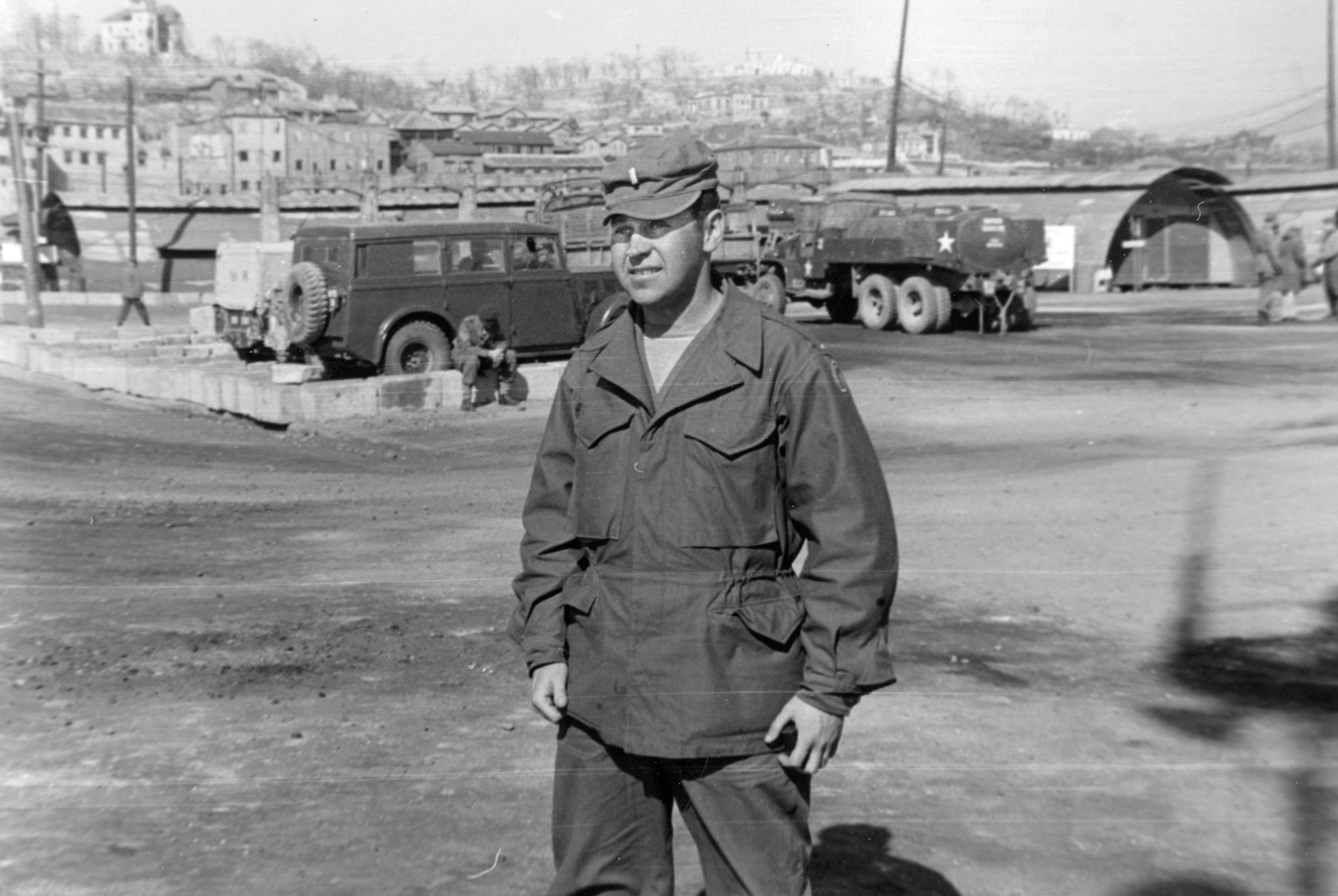
Sevel was commissioned a second lieutenant in September 1949 and joined an amphibious unit. Seven months later, North Korea invaded South Korea, beckoning Sevel to another war. A year after rejoining, he found himself standing on the deck of a Landing Ship, Tank (LST) headed for Inchon, South Korea. It was September 15, 1950, and American Marines and soldiers under General Douglas MacArthur were hitting the North Koreans in their vulnerable flank with an amphibious assault.
Watching the assault from his LST, Lieutenant Sevel thought to himself, “You idiot, you made it all the way through World War II and now you’re here.” In the distance, he could see the battleship USS Missouri firing its big guns at targets 20 miles inland. Sevel’s ship landed at Wolmido Island, which the Marines had already cleared. He and a few other soldiers and a large unit of Marines disembarked and began unloading equipment. Not long afterward, they took control of landing operations for the port.
Sevel spent the next few months cruising the Inchon harbor in a crash boat, a craft slightly smaller than a World War II-era patrol boat. Running on airplane fuel, crash boats could zip around the harbor. “That thing could fly!” he recalled. He directed ships where to land to avoid being stranded by Inchon’s extreme tidal change—30 feet between high tide and low. When a ship arrived, Sevel cruised up to it and boarded. He introduced himself to the captain, and the captain would salute and turn the ship over to him. The first time this happened Sevel thought, “What the hell do I do here?” He had never driven a ship before, but he eventually got used to it. “I was like a harbor pilot,” he said. Ship captains who did not listen to Sevel or his comrades could find themselves stuck in the mud or sliding back out to sea at low tide.
The Retreat South
As United Nations troops pressed north, Sevel boarded the merchant ship Robin Trent and set sail south. “I was the only officer on board,” he recalled. He stayed in the rather luxurious owner’s cabin and ate his meals with the captain. The ship sailed entirely around South Korea and eventually dropped Sevel off on a beach at the North Korean port of Riwon to support the Army’s 3rd Infantry Division.
“We didn’t expect to be there that long,” he said, and he was right, but not for the reasons he thought. Communist China entered the war and pushed the UN forces south, through Korea’s snow-covered mountains. The Chinese overran the area, but before they arrived Sevel and his fellow officers ordered extra equipment from Japan. The had packed up most of their equipment, including their officers’ bar, before sailing for Korea. Despite the chaos, crates of equipment arrived, complete with the bar.
As the Chinese onslaught continued, Sevel and his comrades boarded a train headed south through the Chinese lines to the port of Hungnam. Once there, they ran the evacuation of the port in the weeks leading up to Christmas. Approximately 100,000 troops and 100,000 civilians escaped before demolition teams destroyed the port facilities on Christmas Eve, just before the Chinese entered. Sevel departed in a Landing Craft, Mechanized (LCM), which took him to Pusan at the southeastern tip of the Korean peninsula.
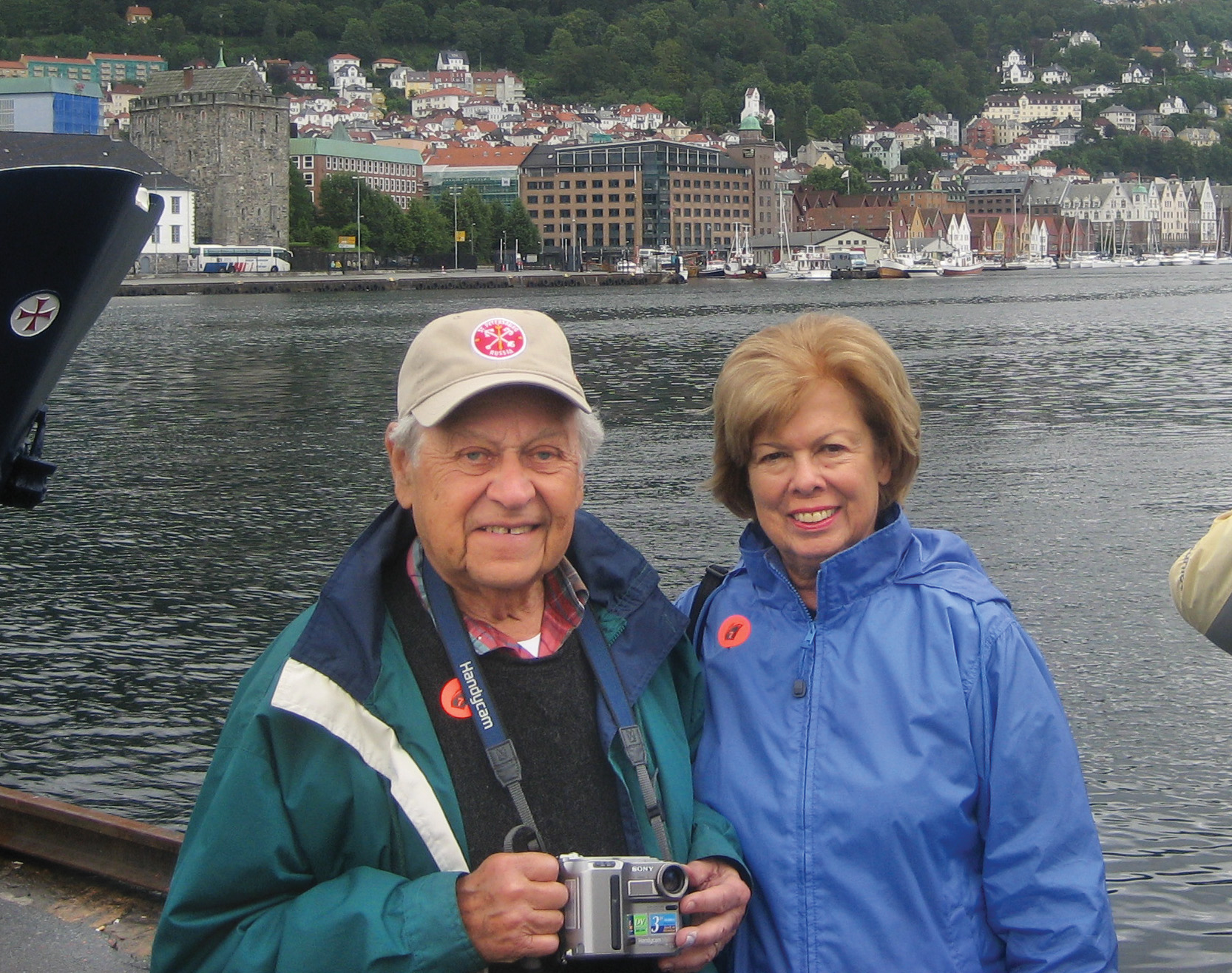
Returning to Civilian Life
In the summer of 1952, after more than two years in a combat zone, Sevel departed Korea. Figuring he had been lucky up to then but that his luck would not hold forever, he returned home and resigned his commission. He divorced his wife and found work as an engineer in New Jersey and then in Baltimore, where he helped design fighter and bomber planes.
In October 1958, Sevel traveled to a dude ranch in New York. He had enjoyed his time with horses in Germany and wanted to spend more time with them. He set up a few dates and attended a dance with a girl, but when he got to the dance hall he spotted a “real good looking dark-haired girl.” He walked over to her and asked if she knew she was wearing her dress backward. “I was the tenth guy who asked her that.” Her name was Deane Siskind, and she held a drink that someone else had given her. When other guys saw the drink they came over, but Sevel told them to get lost.
Later, Sevel sent her an orchid for her birthday. “It was a bad move,” he recalled. A friend of hers had recently died, and someone had put an orchid in her coffin. She forgave him, and six months later, on March 29, 1959, they married. They had two boys, Adam and Johnathan. Two years after their marriage, Sevel changed careers. He entered law school, earned his degree, and went into private practice.
Sevel never attended any 90th Infantry Division reunions or joined the American Legion. “I didn’t want to get together with old war buddies and just sit around telling stories of the past,” he explained. Soon after he returned home from Europe, a Bronze Star with a “V” for valor arrived in the mail. The attached citation read that he had earned it on April 2, 1945, for crossing the Werra River, which the Army considered a “meritorious achievement in the face of the enemy.” Sevel was not impressed. “I didn’t think I was entitled to it.”
As of 2016, Sevel still goes to his law office three times a week and is a grandfather twice over. He looks back fondly on his time in the service. While he has trouble recalling all his experiences from the European war, there is one lesson he learned that he still carries with him. He hesitates when he sees crooked picture on a wall. “I don’t straighten pictures.”
Frequent contributor Kevin M. Hymel is a historian for the U.S. Air Force Chaplain Corps and author of Patton’s Photographs: War as He Saw It. He is also a tour guide for Stephen Ambrose Historical Tours and leads a tour of General George S. Patton’s battlefields, including battle sites of the 90th Infantry Division.
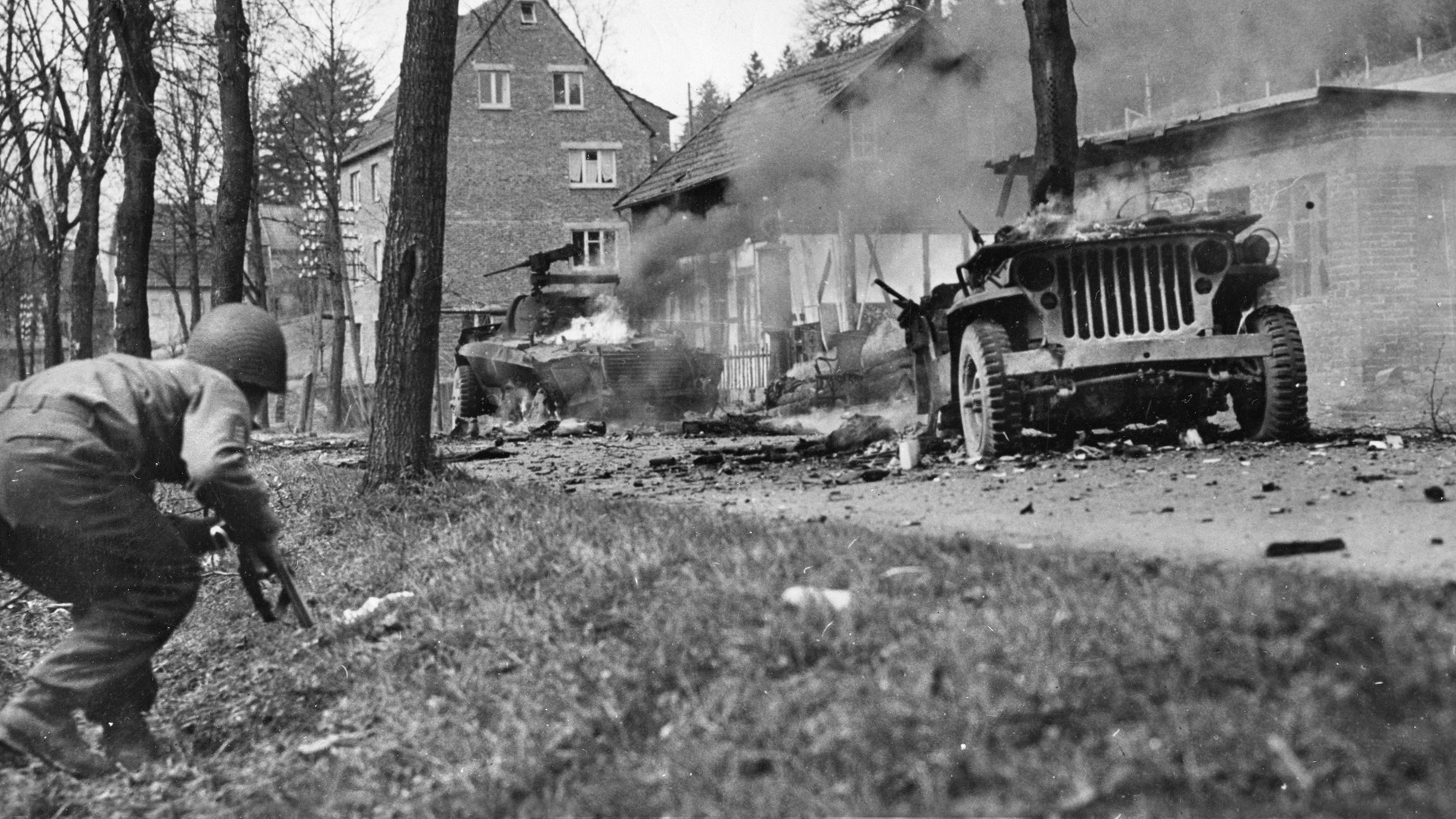
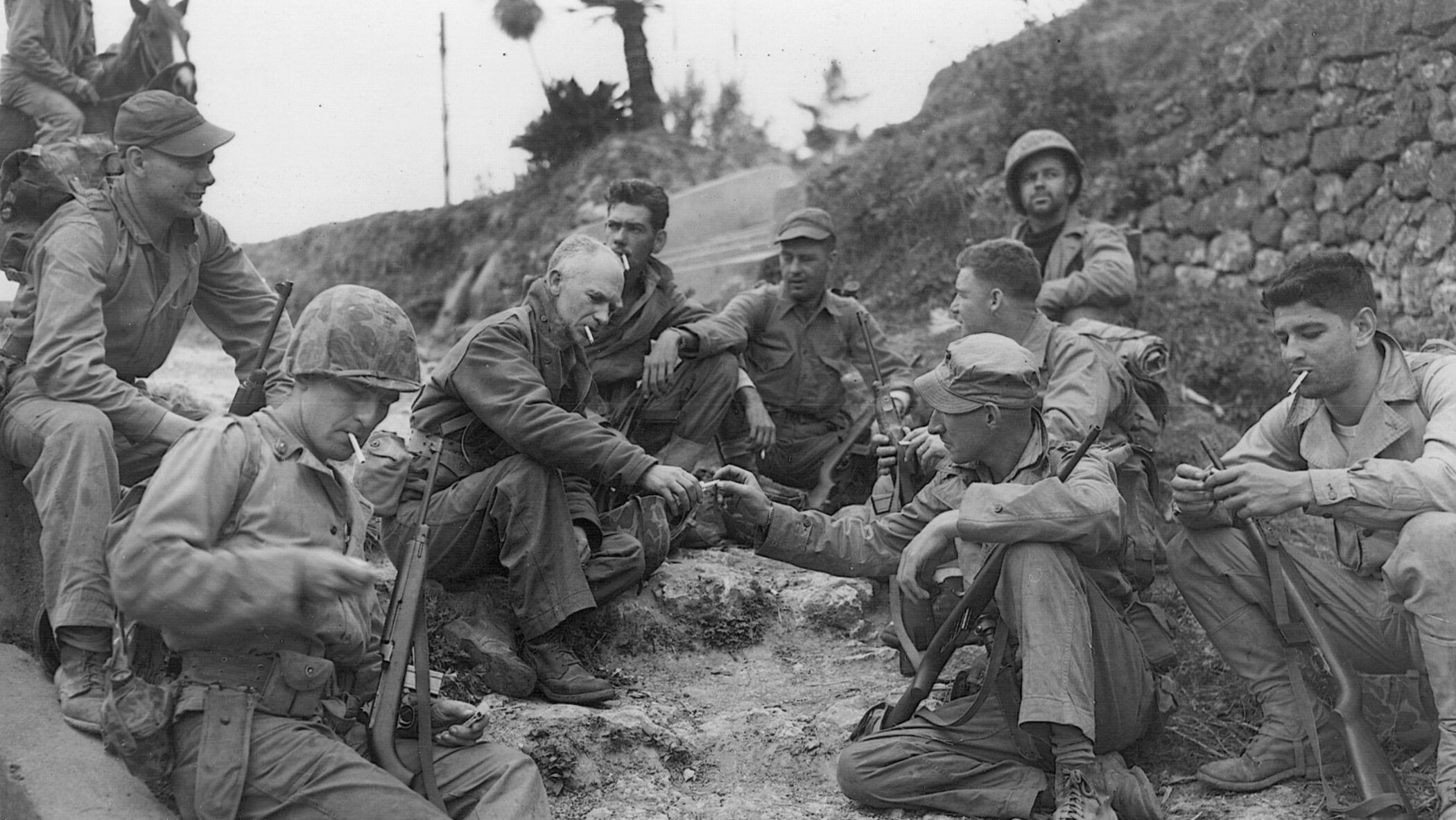
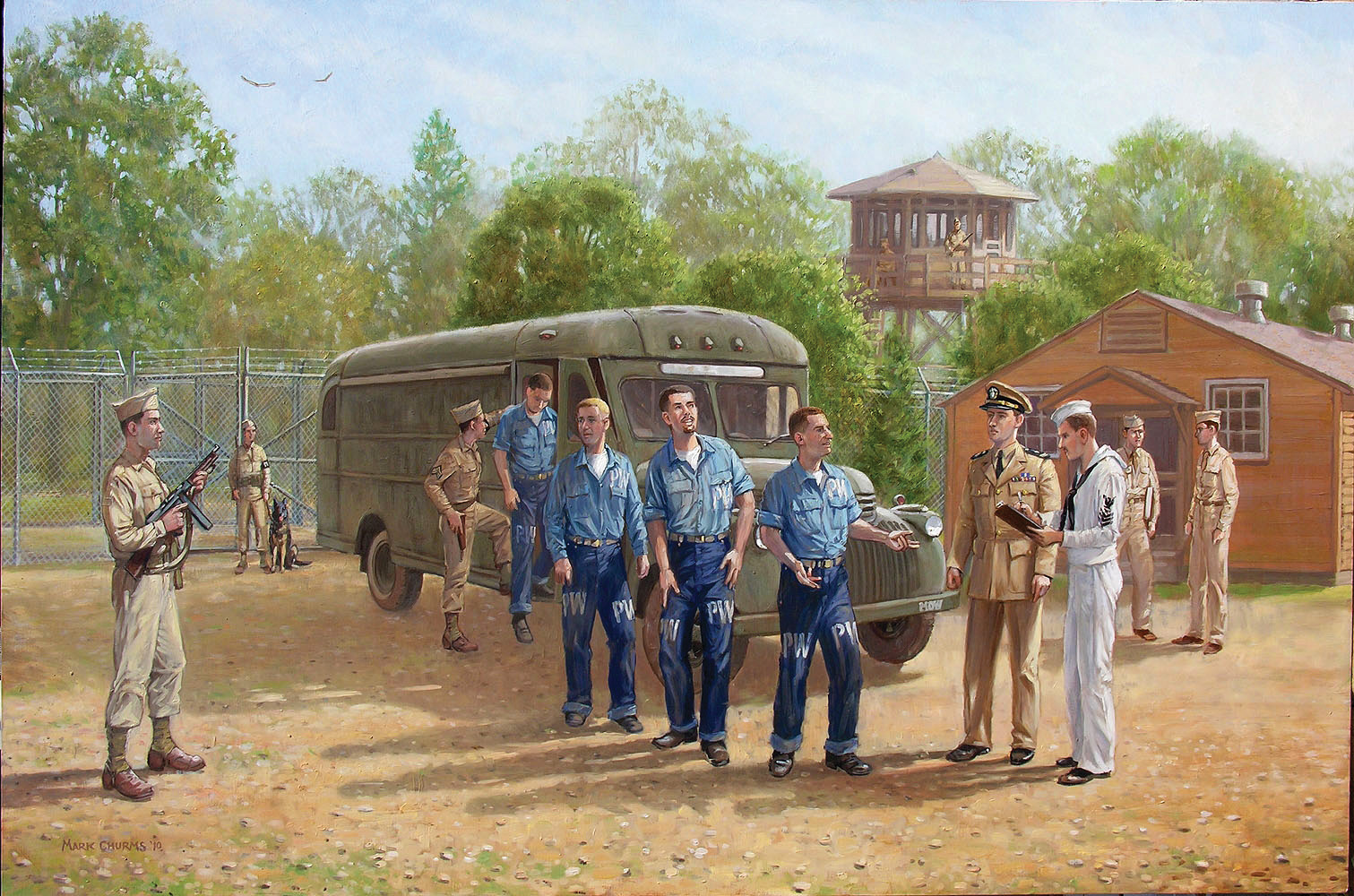
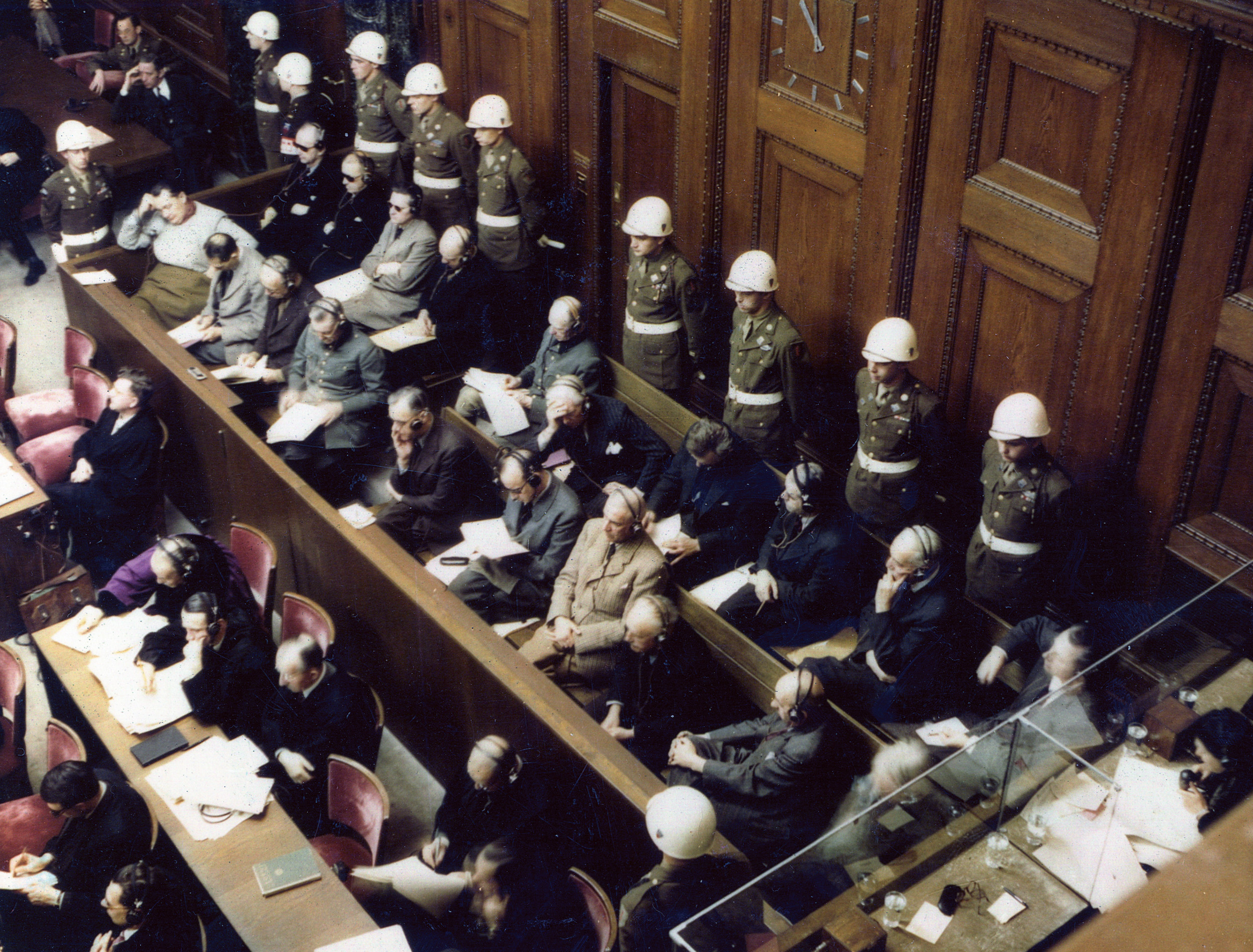
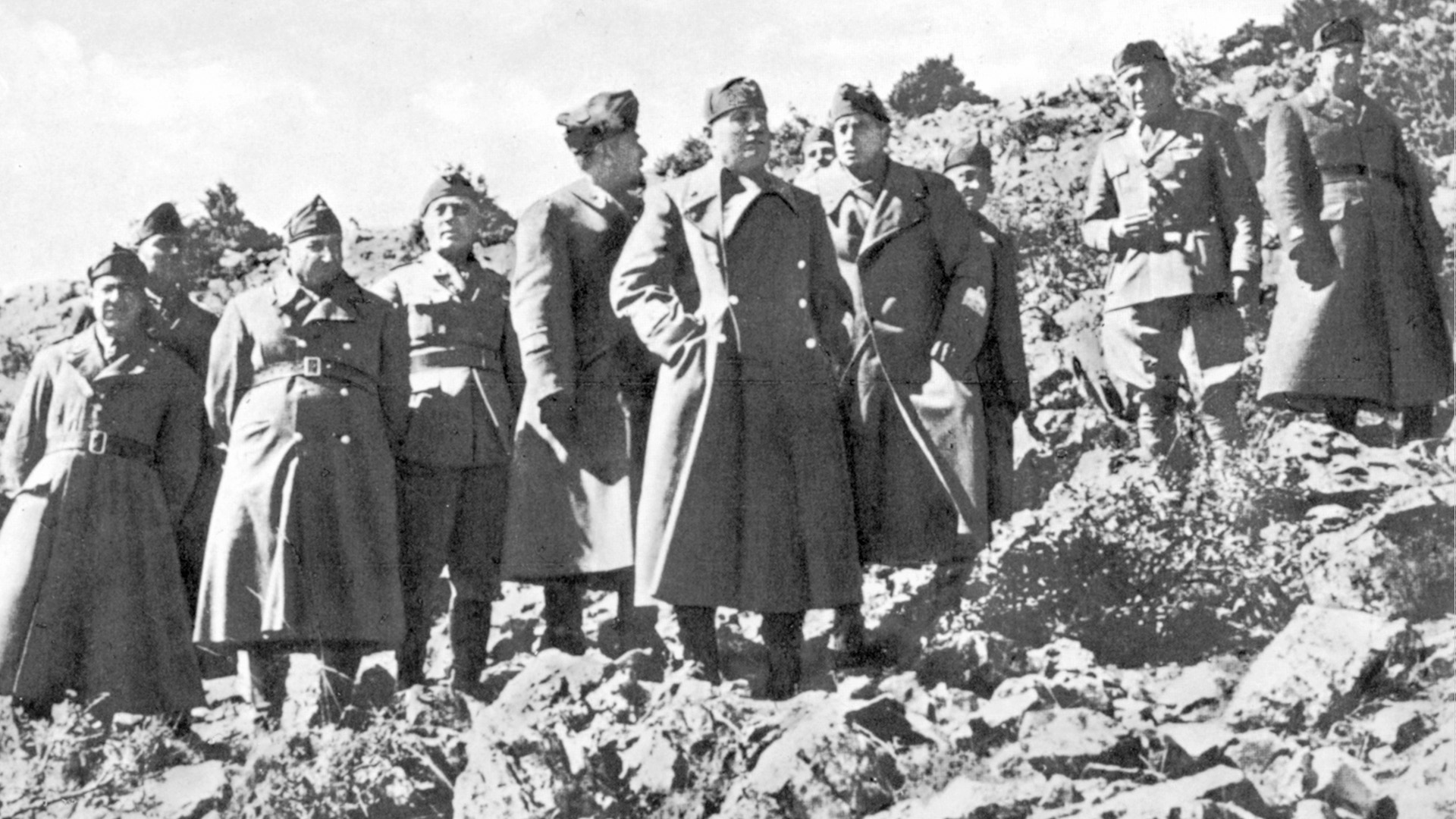
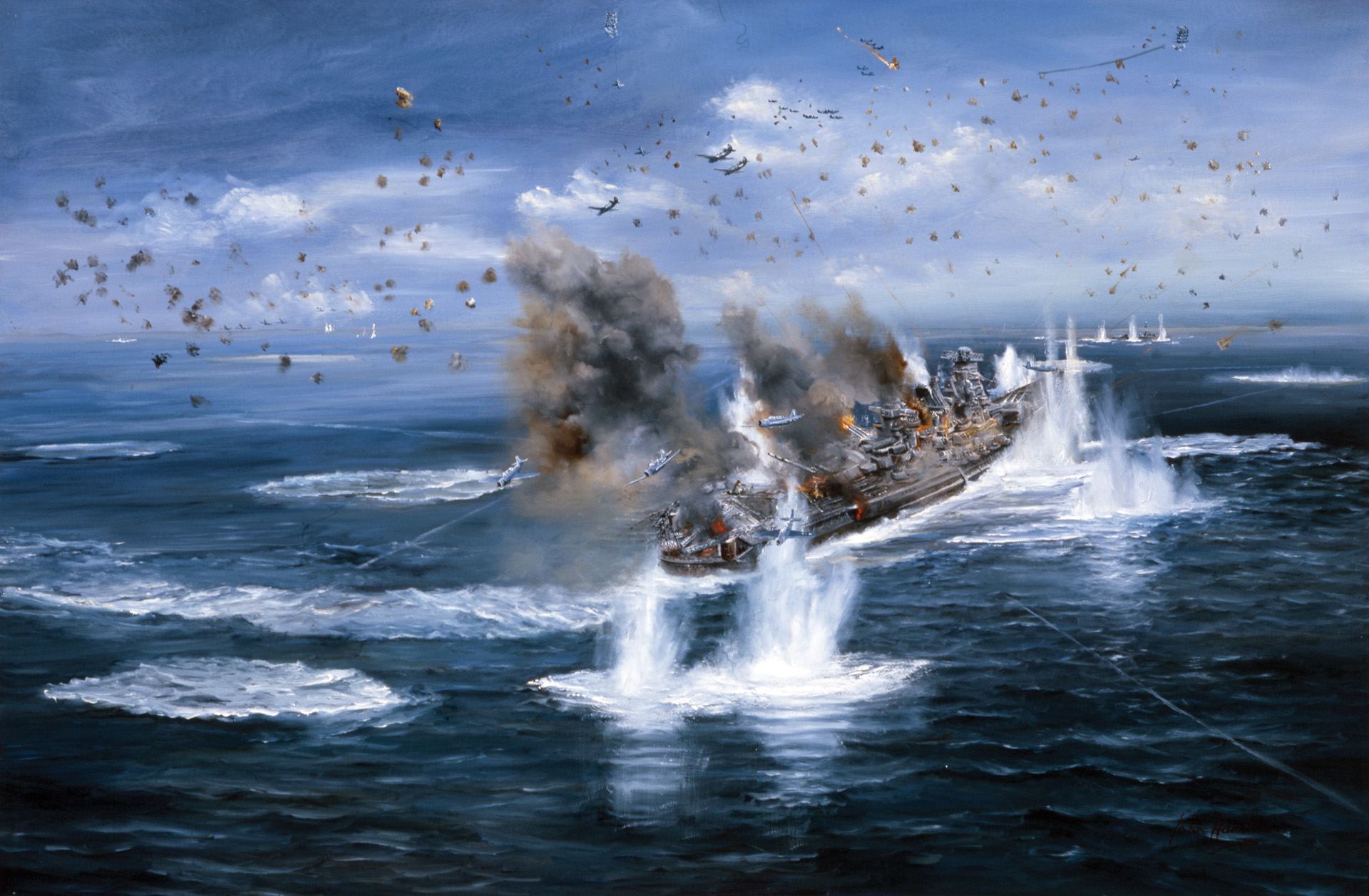
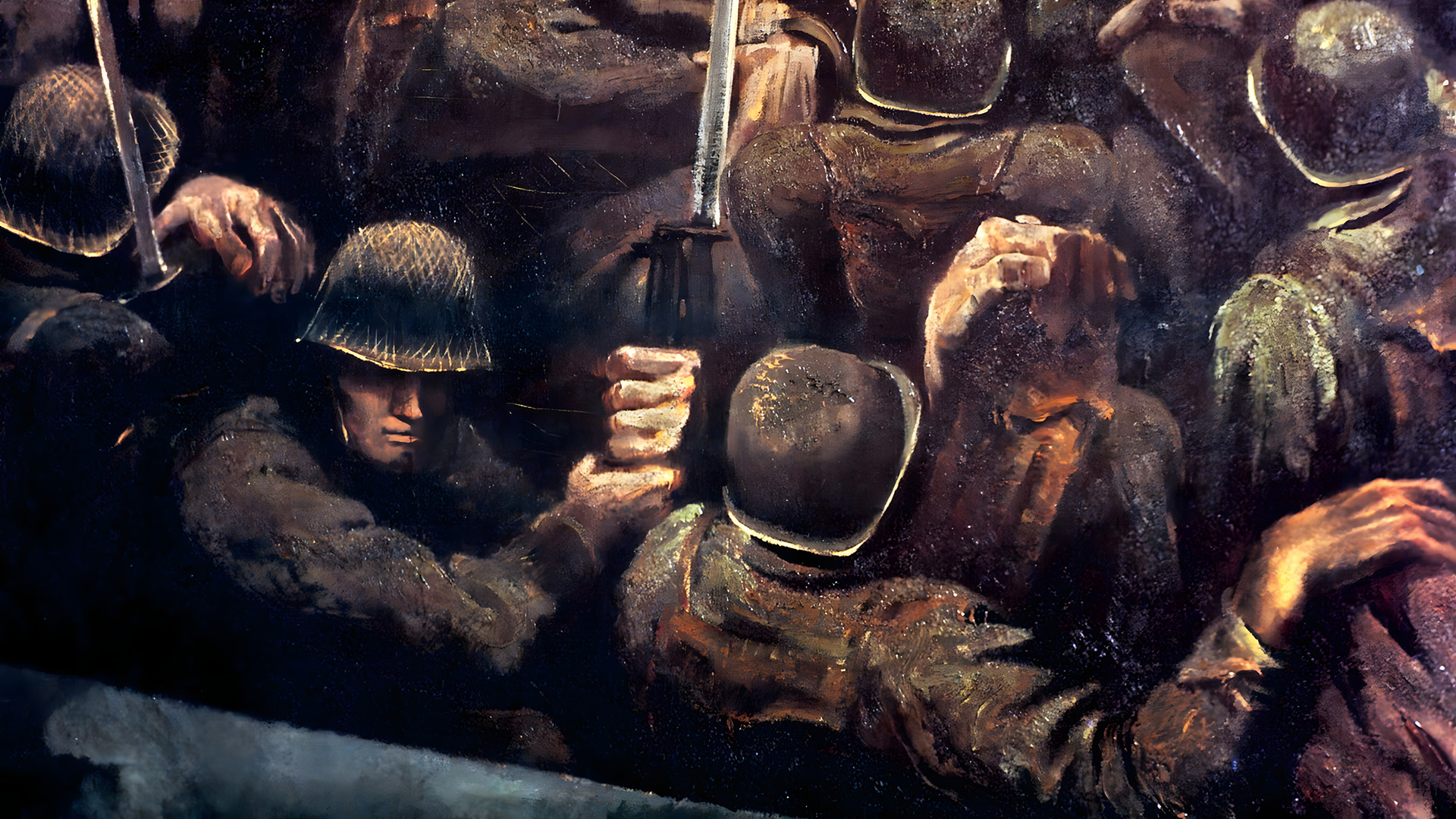
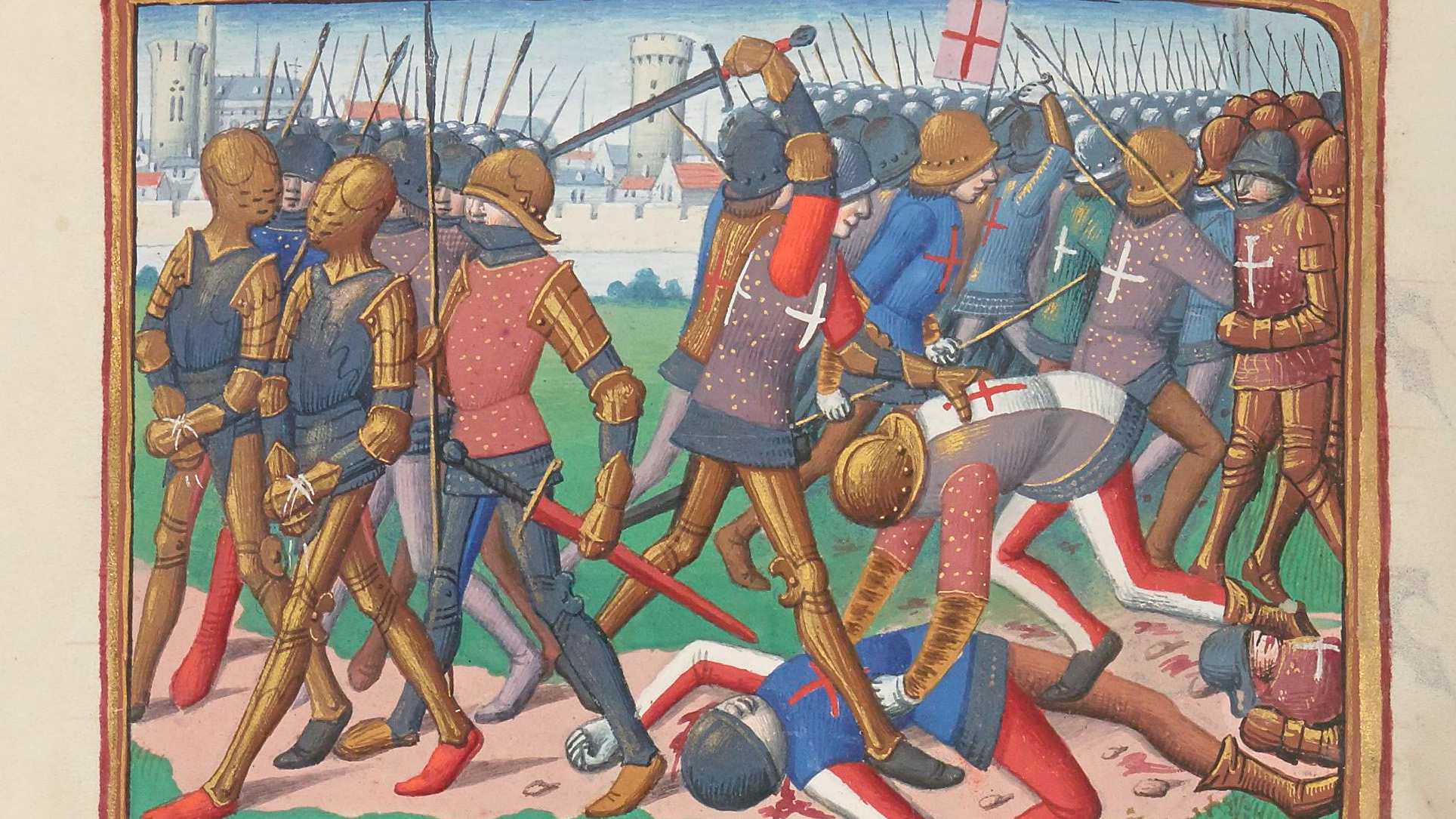
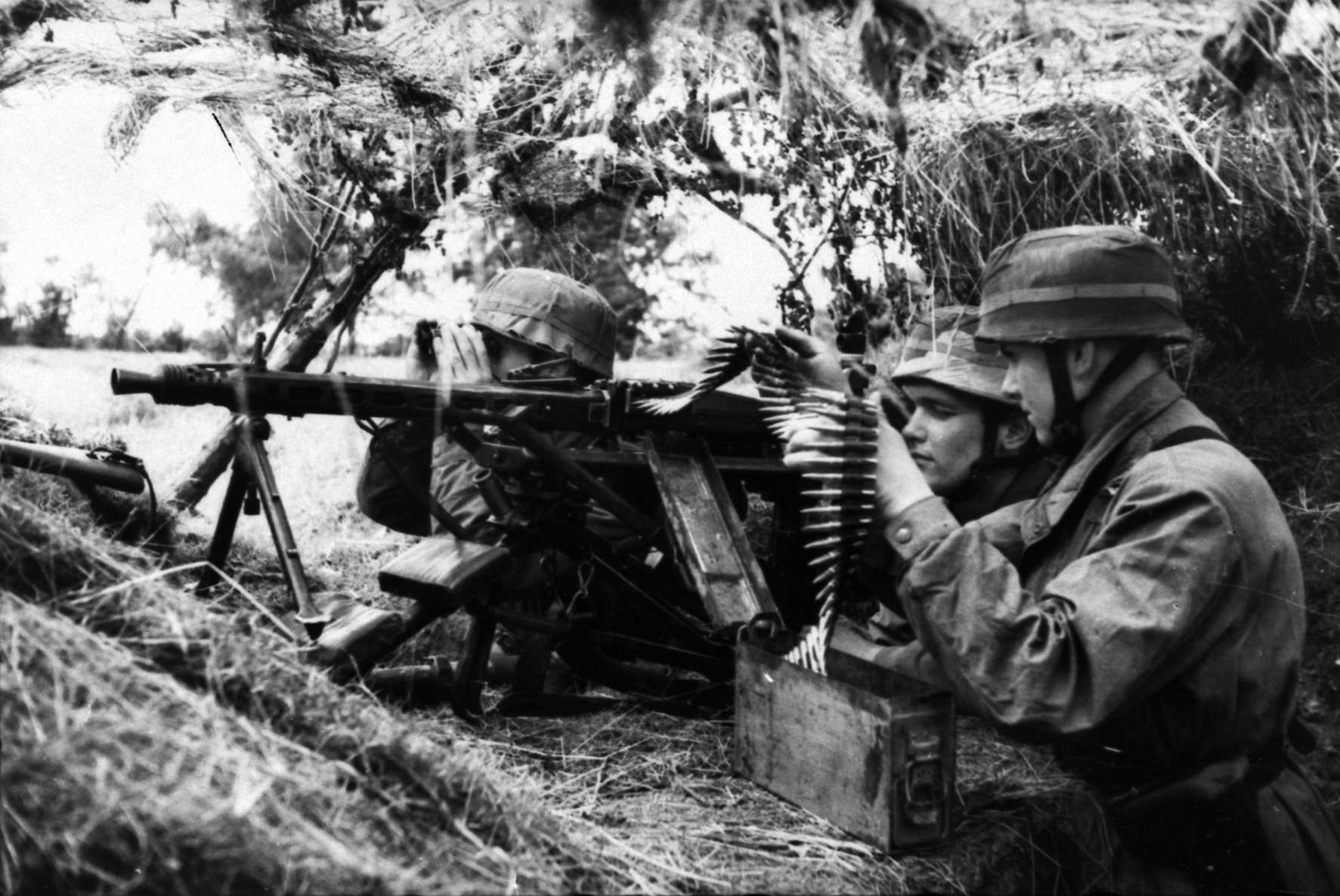
Join The Conversation
Comments
View All Comments